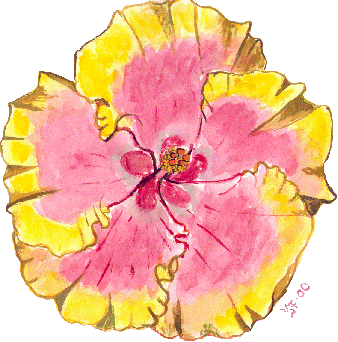Sometimes commercial growers that use growth regulators are presents as greedy beasts preying on an innocent public, which is quite unfair. Most growers are very caring about their plants and their customers. Nobody stays in the hort business because they want an easy way to become rich.
When it comes to growth regulators it should be understood that nearly all potted and bedding out plants you'll find in garden centers, from African violets to Zinnias, are treated with Cycocel, Bonsai or similar products. Many side by side tests have been done with treated and untreated plants, where the buying public nearly always pick the treated ones and why not? They are more handsome, perform better as well as more reliably and bloom uniformly.
Nobody wants to buy flowering plants that are not in bud and bloom. Here growth regulators do the sellers a service as they can be use to stagger the blooming over the season, which means more plants are sold per year and that in its turn translates into larger production. Larger production means higher efficiency, which results in cheaper plants for the customers. When the plants are cheap customers can afford to buy more. Plants are often impulse buys and a cheap plant has a better chance to find its way into the shopping basket than an expensive one.
Cycocel - the Good
Although not a Cycocel supporter by any means I do disagree that Cycocel only benefit the growers. There are GOOD reasons to use Cycocel too.
- Cycocel treated plants are smaller and more compact. Plant size is a key factor for people that grow hibiscus as indoor potted plants like we do in Europe. Without the compact growth habit caused by the Cycocel treatment I doubt hibiscus would continue in the top 20 of flowering indoor plants year after year. There's simply not enough room in most European homes for even one 3-5 feet tall hibiscus plant as few hibiscus will naturally stay anywhere near 10-12" (25-30 cm) which is the average size of hibiscus plants sold here.
- Cycocel treatment will make a vigorous plant less sprawly and easier to grow. I have a plant of Van Houtten, a popular European hybrid, that's NOT treated with Cycocel. It's a three foot sprawler, as wide as it's high and with lots of "air" between the branches. I prune it regularly but as it won't bloom until it reaches a certain size it's impossible to keep low and compact. In it's untreated state it's not a pretty plant and don't look particularly well in a window.
- Cycocel treatment is often necessary to get small 12" plants to flower. As hibiscus is a flowering plant it's vital that it's in bloom at the time of purchase. Who would buy a hibiscus not in bloom? Certainly not the public in general. Since plants must be small and flowering to move off the shelf the PUBLIC not the grower dictates the use of Cycocel.
Cycocel - the Bad
The BAD with Cycocel is from the hybridizer's point of view. However, since less than 0.1% of all people buying a hibiscus will want to hybridize with it this can't be considered an issue except for a select few. Remember that we are the aficionados who care about these facts.
- Cycocel treated plants will rarely set seeds although the pollen might still be good. However, some varieties won't set seed at any time or only do so only under certain circumstances in which case it's wrong to blame growth regulators for the lack of pods. Lack of pods are NOT a sign that your plant has been treated with Cycocel!
- Plants will outgrow Cycocel administrated in the correct dosage. Cycocel shortens the distance between leaf nodes, hence the more compact, fuller bush. When plants outgrow the treatment they will often look funny as the newer shoots won't appear anything like the ones grown using growth regulators.
- Cycocel treatment can be "reversed" by a generous applications of giberillic acid.
Cycocel - the Ugly
The UGLY is Cycocel overuse.
- Hibiscus given too much Cycocel may never outgrow it. They're "frozen" at a certain size and will stay so for the rest of their life span. As hibiscus are extremely sensitive to Cycocel, the manufacturer has special instructions for use on hibiscus. The recommended general light dose is 1,000 ppm (parts per million), while hibiscus should not be given more than 200-600 ppm spread out over multiple applications. 200 ppm is a fifth's strength of the lighter dose! It's obviously very easy to overdo the treatment. View label here
- Hibiscus given extreme doses of Cycocel might die after only a few months. Personally I doubt it's because they bloom themselves to death but rather due to an imbalance in hormone production.
To sum it up, Cycocel isn't an out-and-out villain. Used correctly it might even benefit the plants who will be easier to grow, more handsome and produce more flowers. Let's face it; a pretty blooming hibiscus plant will turn more people into hibiscus nuts like us than an unwieldy bush with no flowers!


